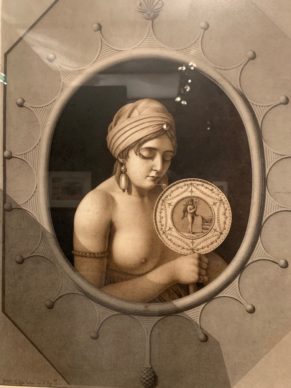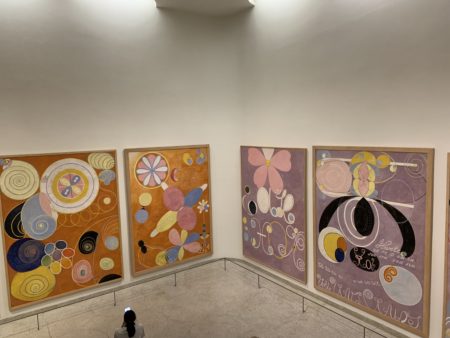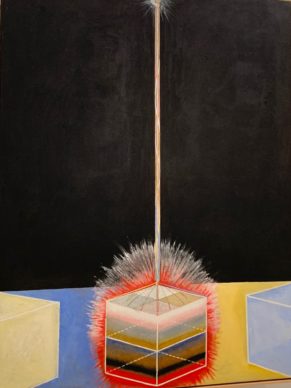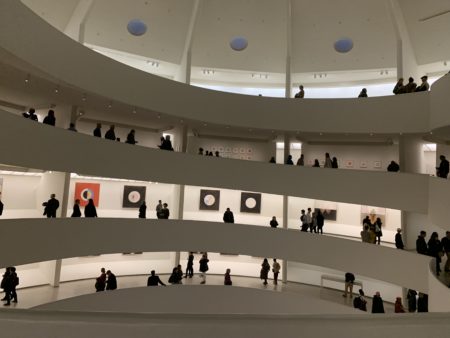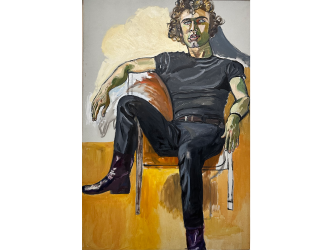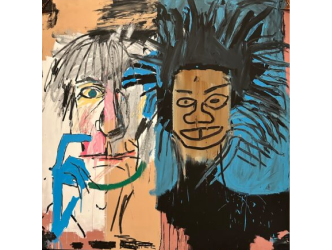Artist’s skill
Despite the fact that, in the past, an artist’s skill was never the sole factor in determining whether they’d be part of a successful artistic community, nowadays it’s clear that this is a notion that rarely adds to the relevance of the artistic practice.
Hence in the art world of today, belonging to one circle or another (being recognized by museums, dealers, or collectors) becomes the key component in creating a substantial career.
Wild art explained
A book has just been published in the United States entitled “Aesthetics of the Margins / The Margins of Aesthetics: Wild Art Explained” which opens pandora’s box in terms of the criteria for non-recognition and the arbitrariness of this phenomenon in the world of contemporary art.
It was written by two academics, David Carrier, a former professor of philosophy at Carnegie Mellon University, and Joachim Pissarro, a professor of art history and director of the Hunter College Art Gallery.
Their role is important in that they challenge the selection criteria within the art world of today.
Outside the art system
To refer to this mass of rejected art, which falls outside the “art system”, the two authors have landed upon the – to my mind – unfortunate term of “wild art”, like wild animals as opposed to domestic animals.
Yet the Cobra movement was already calling for a form of wild art in the late 1940s. The same expression was used to describe African art at the beginning of the 20th century.
Here the demonstration, and it does prove to be salutary, consists of showing that the art system is based on random recognition. The two professors don’t offer any solutions but instead highlight the need for us to open our eyes.
The love for outsider art
They could be criticized for overlooking one major phenomenon: the fact that the art world of today heaps praise on outsider artists. You only have to look at the success of the travelling exhibitions of The Museum of Everything and The Gallery of Everything (“for undiscovered, unintentional, untrained and unclassified art”), the gallery which also took part in the latest Frieze fair in London with a display of Haitian naïve art.
The current great success at the Guggenheim Museum (until 23 April) is a show featuring the unknown inventor of abstraction, Swedish artist Hilma af Klint, who during her lifetime only displayed her tedious work depicting classical landscapes.
The Petit Palais in Paris is currently showing, also to great success, a real revelation in the form of drawings by French 18th century artist Jean-Jacques Lequeu, an office worker yet one who created futuristic architecture and fascinating erotic representations.
Hyperallergic recently ran a piece penned by Edward M. Gómez on the Outsider Art Fair in New York with the headline: “today the works of the most original autodidacts feel more compelling than ever”…
Here’s a selection of quotes that serve as so many avenues for reflection on art outside the system and its arbitrariness, revealing a little of the flavour of this work.
Conversely, these thoughts point the way towards an art which may well be good, but which will certainly never be successful.
Quotes
“There are two kinds of art: Art World Art, which is found, valued, and interpreted within the Art System, and Wild Art, which for the most part is found outside of the Art World.
Yet perhaps the primary benefit of this book lies in the skill with which it, conversely, teases out the vagaries of the Art World’s love/hate affair with its own significant Other: mass culture.
That Twombly’s ideal abode was a palace in a rough neighborhood nicely describes this peculiarly Italian synthesis of austere high art and vulgar street culture. Through his art and vision, Twombly managed to achieve what we claim is not only possible but desirable.
The discovery of the universal capacity for forming judgments of taste that do not have to align with any particular normative system was a complete revolution, concurrent with the American and the French revolutions.
Aesthetics is what distinguishes us from god. God is a spirit unlimited by senses or sensibility, while we are first and foremost defined and limited by our senses and their activation.
The judgment of taste is universal. Everyone is capable of expressing of a judgment of taste on any given work of art, object or situation.
The system itself is not equipped to accommodate the demands and claims of those multitudes of individual judgments.
Ignorance continues to be an important factor within the Art World but not in the way one might imagine at first. The Art World is itself ignorant of the multitude of other art worlds out there, which are parallel in function to the Art World.
We are questioning the hiatus between official Art History and the stupendous number of works of art ignored by Art Historians.
The role of the curators radically changed when they positioned themselves in competition with History – when in other words, rather than reconstruct the path of History through looking at objects, curators attempted to predict History’s future course.
The possibility of everyone agreeing that Michelangelo is a genius is a great idea, but it is nothing more than an idea – a utopian dream, never to be realized.
Instead of (…) beginning to look at possible taste judgment as carrying equally valid claims, the Art World swallowed whole this Duchampian move, largely encouraged by Duchamp’s binary opposition of “retinal art” versus art at the service of the brain.
From the purity of the void to the abjectness of a dumpster (from Arman to Paul McCarthy) everything or anything could be determined by an artist to become an object of contemplation.
How often does one find a copy of ArtForum or even better October on a pile of periodicals in a dentist’s waiting room or an airport lounge? Never. The Art System is geared toward self consumption.
The only members of the Art System who are able to shake the system are the artists themselves. (…) Artists are agents of taste.
To a certain degree, the museums are no longer needed. Look at the Burning Man festival (…) The result, as far as can be seen from any museum, is a feast for the eyes, the senses, the mind – with no concern for what history will be.
When Ai Weiwei does a Study of Perspective (1995), giving the finger to Mao’s portrait at the entrance of the Forbidden City, we understand him as doing a Seinfeld version of Conceptual Art.
Our Art World is ruled by experts, authorities whose judgements very much govern the choices about what art we see and how it is interpreted.
Let us be clear. Kitsch does not designate any particular body of taste. It designates what can never be designated within the Art World.
Here we consider the words of Mohand Cherif Sahli, a historian of colonialism: “In order to find a way out of this impasse, a new Copernican revolution is needed (…) and entirely renew our assumptions, our concepts, our definitions, our theories, and our value system”.
Aesthetics of the Margins / The Margins of Aesthetics: Wild Art Explained
David Carrier and Joachim Pissarro
Penn State University Press
Donating=Supporting

Support independent news on art.
Your contribution : Make a monthly commitment to support JB Reports or a one off contribution as and when you feel like it. Choose the option that suits you best.
Need to cancel a recurring donation? Please go here.
The donation is considered to be a subscription for a fee set by the donor and for a duration also set by the donor.





